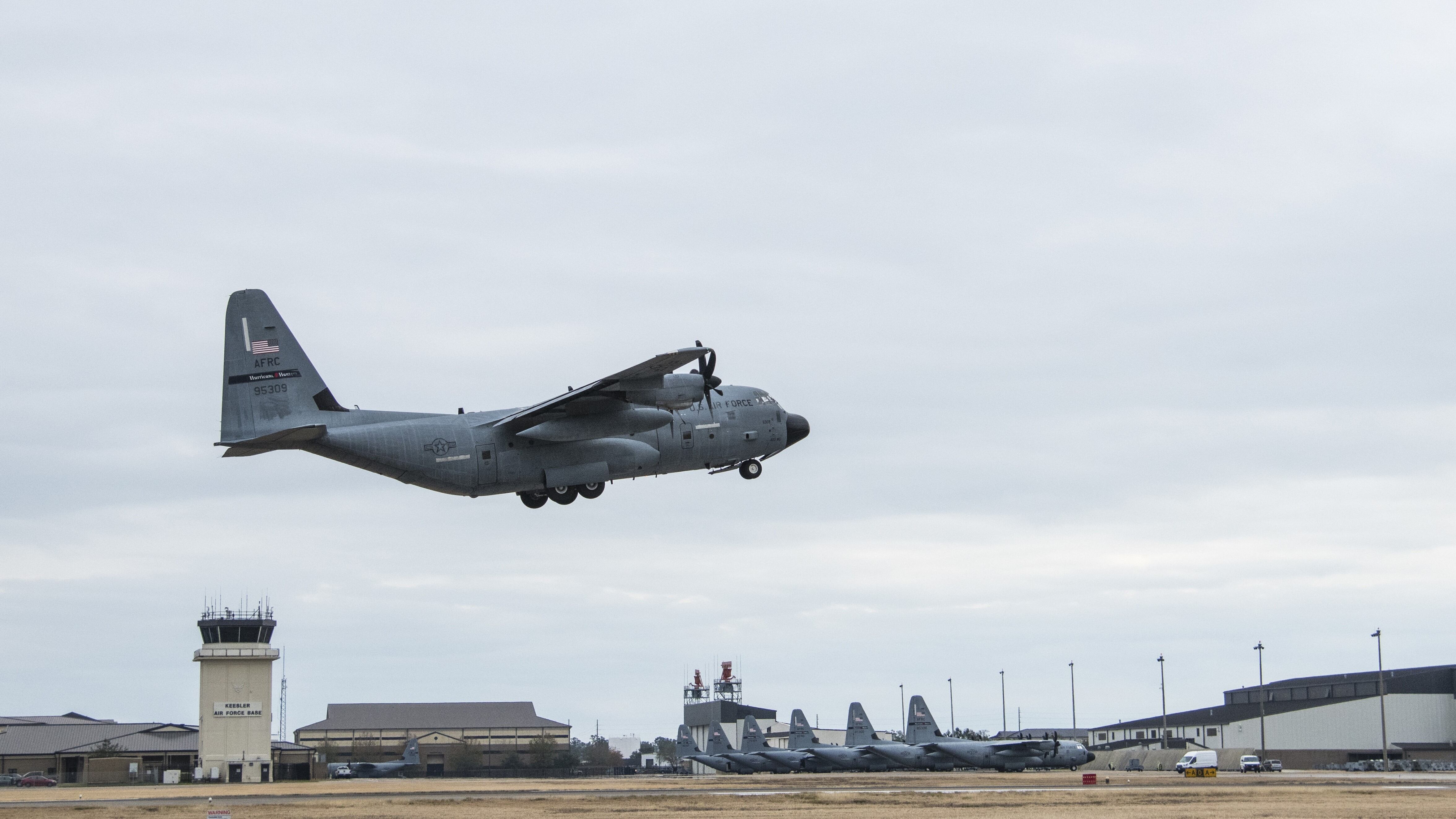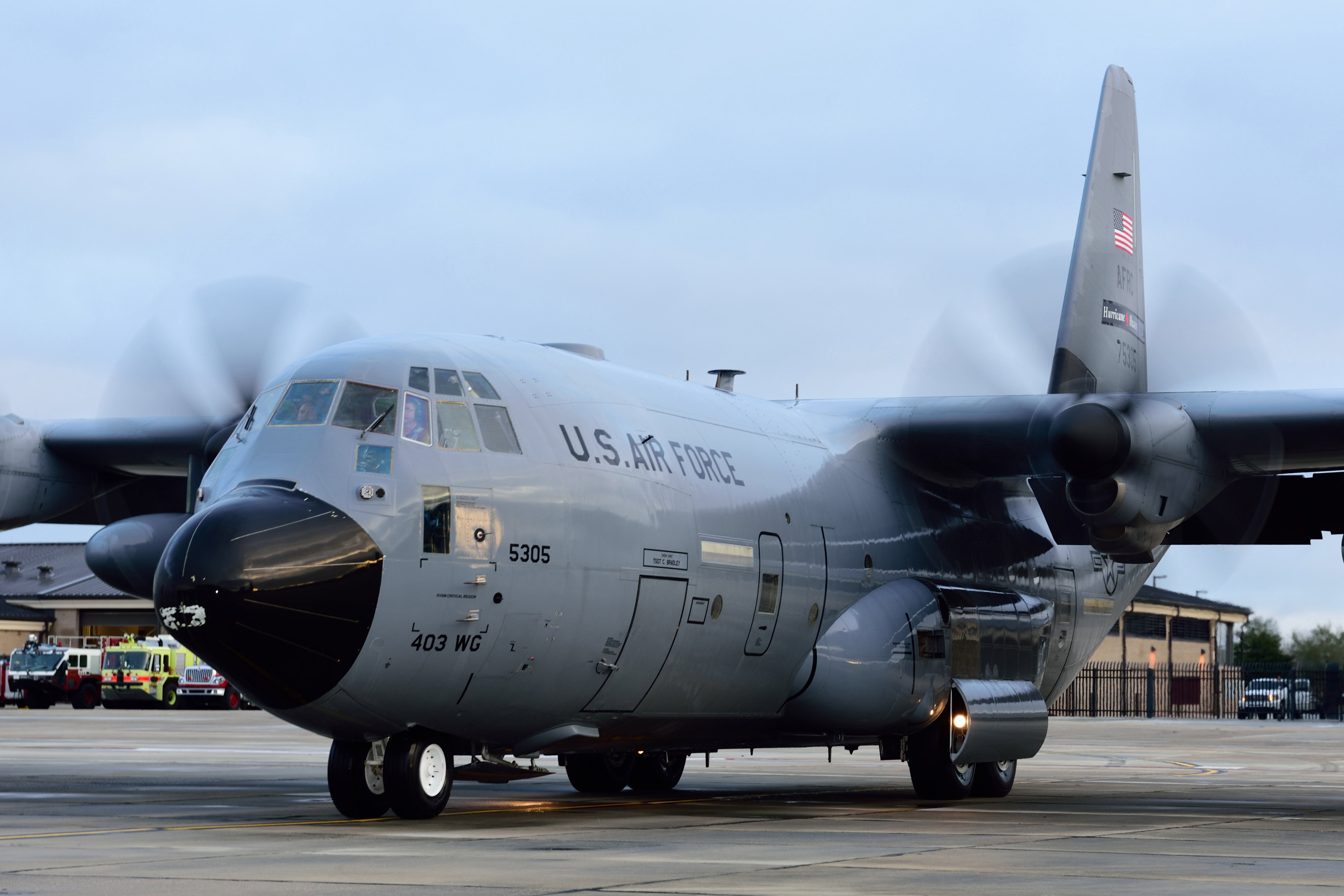The Hurricane Hunters flew their first mission to study winter storms this winter season out of Keesler Air Force Base in Mississippi on Tuesday.
The WC-130J Super Hercules aircraft of the 53rd Weather Reconnaissance Squadron are best known for flying through the eyes of furious hurricanes. But even in the winter months, the Air Force said in a Thursday release, Hurricane Hunters are needed to collect vital meteorological data on severe seasonal storms.
The aircraft survey winter storms for much the same reason as they survey tropical disturbances during the hurricane season — to collect rare data over the water, that can be used to better refine weather models.
The winter storm season began on Nov. 1, the release said. But the Hurricane Hunters weren’t needed for another month and a half, when a storm appeared about to form in the Atlantic Ocean.

“For winter storms we don’t fly through the system, we fly in front of the system,” Lt. Col. Kaitlyn Woods, the squadron’s chief aerial weather reconnaissance officer. “This particular one we are doing these next two days is a storm they believe is going to generate off the Gulf Stream off the East Coast, so we want to get ahead of the system to collect what the atmosphere currently looks like and how it will affect the incoming system.”
RELATED

Hurricane Hunters also fly at much higher altitudes around winter storms than hurricanes formed during the warmer months. When they survey tropical storm systems, the aircraft typically fly through the storms at anywhere from 500 feet to 10,000 feet.
But during winter storms, the Hurricane Hunters fly at altitudes of about 30,000 feet.
The crew on the planes release a meteorological instrument, called a dropsonde, into the storms to collect atmospheric data including the dew point, barometric pressure, wind speed and wind direction. That data is then sent to the National Hurricane Center’s Chief, Aerial Reconnaissance Coordination All Hurricanes, or CARCAH, team in Miami, which then publicly distributes the data so it can be used for more accurate forecasting models from the National Oceanic and Atmospheric Administration.
NOAA’s National Centers for Environmental Prediction in College Park, Maryland, works with CARCAH to schedule Hurricane Hunter missions to study winter storms, the Air Force said.
Stephen Losey is the air warfare reporter for Defense News. He previously covered leadership and personnel issues at Air Force Times, and the Pentagon, special operations and air warfare at Military.com. He has traveled to the Middle East to cover U.S. Air Force operations.




